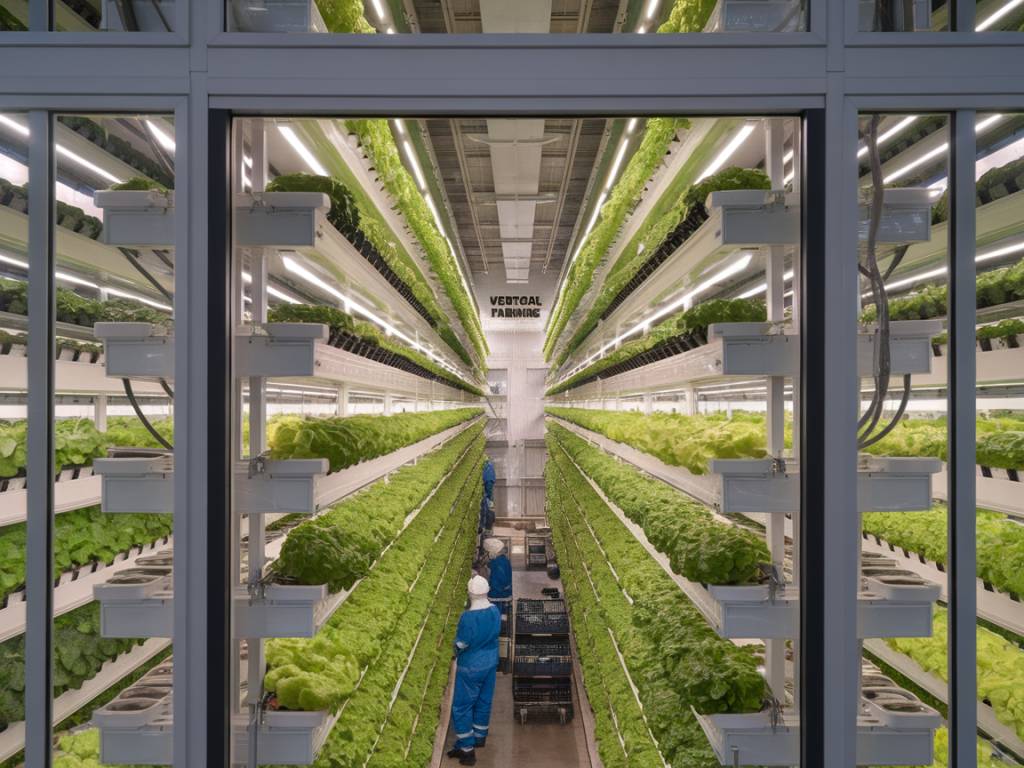Introduction: Farming Goes Vertical
Imagine a farm. What do you see? Fields stretching as far as the eye can see? Rows of crops swaying under the sun? Now imagine replacing those fields with skyscrapers full of greenery. Welcome to the world of vertical farming—a revolutionary approach that’s transforming sustainable agriculture.
In a time of growing population, urbanization, and climate challenges, vertical farming is emerging as a powerful solution. But how exactly does it work, and what makes it so groundbreaking? Let’s dive in.
What Is Vertical Farming?
Vertical farming takes traditional agriculture and flips it—literally—on its side. Instead of planting crops across wide, sprawling fields, crops are grown in stacked layers, often inside controlled environments such as warehouses or high-rise buildings. The idea is to use less land and fewer resources while maximizing yield.
For this to work, vertical farms typically rely on technologies like hydroponics (growing plants without soil using mineral-rich water), aeroponics (using mist to deliver nutrients), and artificial lighting, such as LEDs designed to mimic sunlight. The result? Farming that’s efficient, scalable, and suitable for urban settings.
Why Vertical Farming Matters
You might wonder, why all the fuss? Isn’t traditional farming enough? The truth is, vertical farming addresses some of agriculture’s most pressing challenges:
- Land use: Traditional farming consumes vast amounts of arable land, much of which is disappearing due to urban sprawl and environmental degradation. Vertical farming drastically reduces the land footprint.
- Water efficiency: Agriculture accounts for 70% of global freshwater withdrawals. Vertical farming, on the other hand, can require up to 95% less water.
- Climate independence: By operating indoors, vertical farms are not subject to climate extremes, floods, or droughts—issues increasingly tied to global warming.
- Proximity to consumers: Vertical farms can be located in cities, reducing the need for long supply chains and cutting down carbon emissions from transportation.
Technology at the Heart of Vertical Farming
To achieve its promise, vertical farming relies on advanced technologies that make it an intersection of agriculture and innovation. Here are some key enablers:
- LED Lighting: Specially calibrated LED lights provide plants with the specific wavelengths they need for growth. This supports year-round production without reliance on the sun.
- IoT Sensors: Sensors track humidity, temperature, and nutrient levels in real-time, ensuring optimal growing conditions at all times.
- Automation: Many vertical farms use robots for planting, monitoring, and harvesting, reducing labor costs and increasing efficiency.
- AI and Data Analytics: By analyzing data, vertical farms can fine-tune environments to maximize yield and minimize waste.
These innovations mean that vertical farming isn’t just more sustainable—it’s smarter, too.
Real-World Examples of Vertical Farming
Beyond the theory, vertical farming is already making waves globally. Here are some stand-out examples:
- AeroFarms (Newark, USA): A pioneer in the space, AeroFarms grows leafy greens and herbs inside a former steel mill. Their advanced setup uses 95% less water than traditional farming and yields 390 times more produce per square foot annually.
- Infarm (Berlin, Germany): Infarm installs vertical farming units in grocery stores, allowing consumers to harvest fresh produce right at the point of purchase. Talk about zero food miles!
- Plenty (California, USA): With financial backing from Jeff Bezos, Plenty focuses on scaling vertical farming to meet global food demands. Their farms produce long-lasting greens and reduce food waste significantly.
These companies exemplify how vertical farming can be profitable, sustainable, and impactful.
Addressing the Critics
Yet, as promising as vertical farming sounds, it’s not without its skeptics. Critics point to high energy demands, the cost of infrastructure, and the limitations on crop diversity (root vegetables and grains are currently less suited to vertical farming methods). These are valid points—but they’re challenges that the industry is actively addressing.
For example, many vertical farms are transitioning to renewable energy sources like solar and wind to offset their energy use. Meanwhile, ongoing research promises to expand the range of crops that can thrive in vertical setups.
Why It’s a Game-Changer for Sustainability
The significance of vertical farming extends beyond a new way of growing food—it’s creating ripple effects across sustainability efforts. This approach can:
- Help cities achieve food security even as urban spaces expand.
- Reduce reliance on harmful practices like deforestation for farmland.
- Lower greenhouse gas emissions linked to agriculture and transportation.
- Support year-round local produce, reducing seasonal food shortages.
In short, vertical farming represents a step toward a circular economy where resources are managed efficiently, waste is minimized, and the focus remains on long-term viability.
How You Can Support Vertical Farming
Curious about how you can contribute to this “farm of the future”? Here are some simple ways to get involved:
- Look for vertically farmed produce at your local grocery store—it’s often labeled as such.
- Support companies and startups working in the vertical farming space by purchasing their products or investing in their missions.
- Advocate for urban agriculture initiatives in your community, encouraging local governments to integrate vertical farming into their sustainability plans.
Every little effort helps accelerate this exciting movement.
The Future of Vertical Farming
As our cities grow and climate challenges intensify, vertical farming offers a beacon of hope for sustainable agriculture. With its ability to produce more food using fewer resources, this innovation aligns perfectly with global sustainability goals.
The question is no longer if vertical farming will reshape agriculture—it’s how quickly and to what extent. And that’s an exciting future to look forward to.
